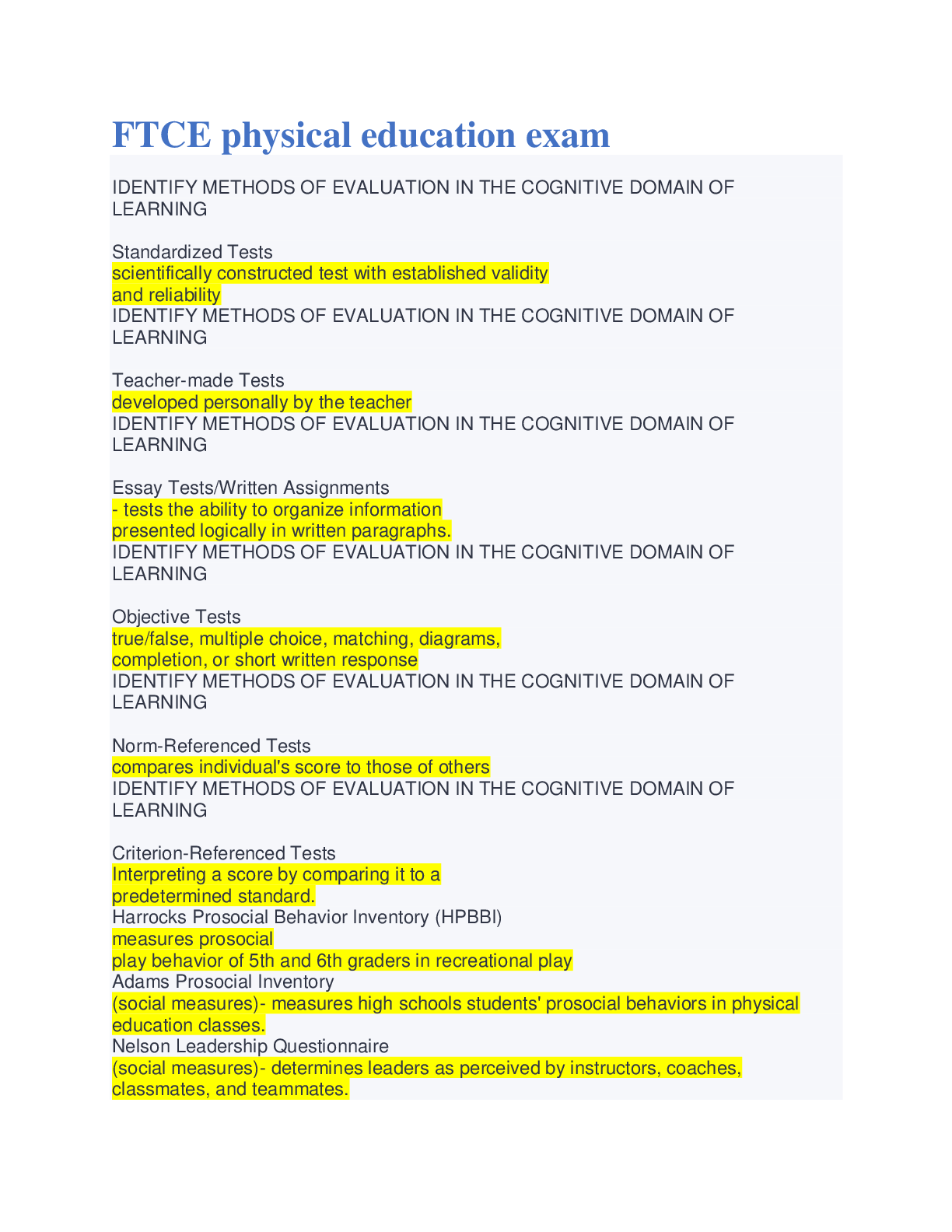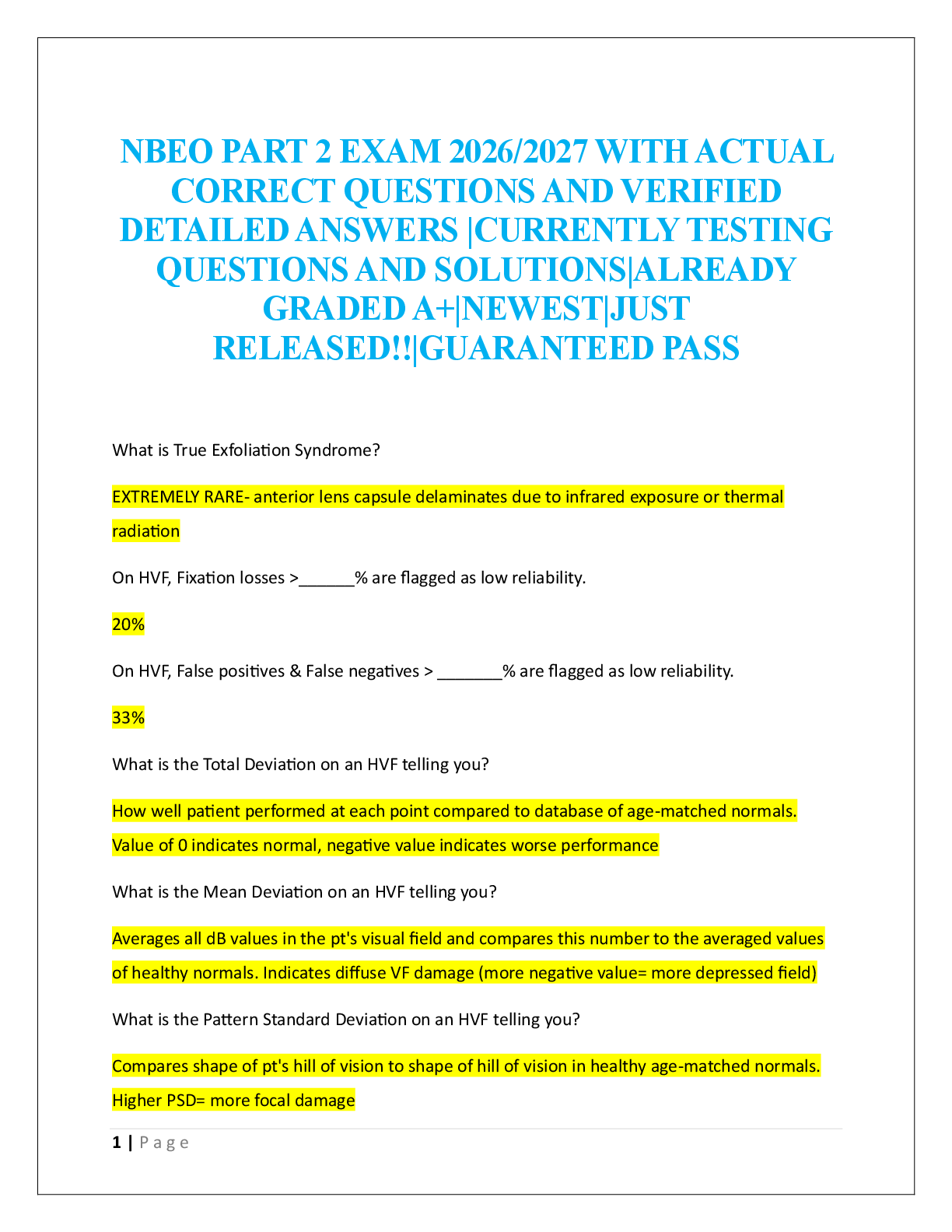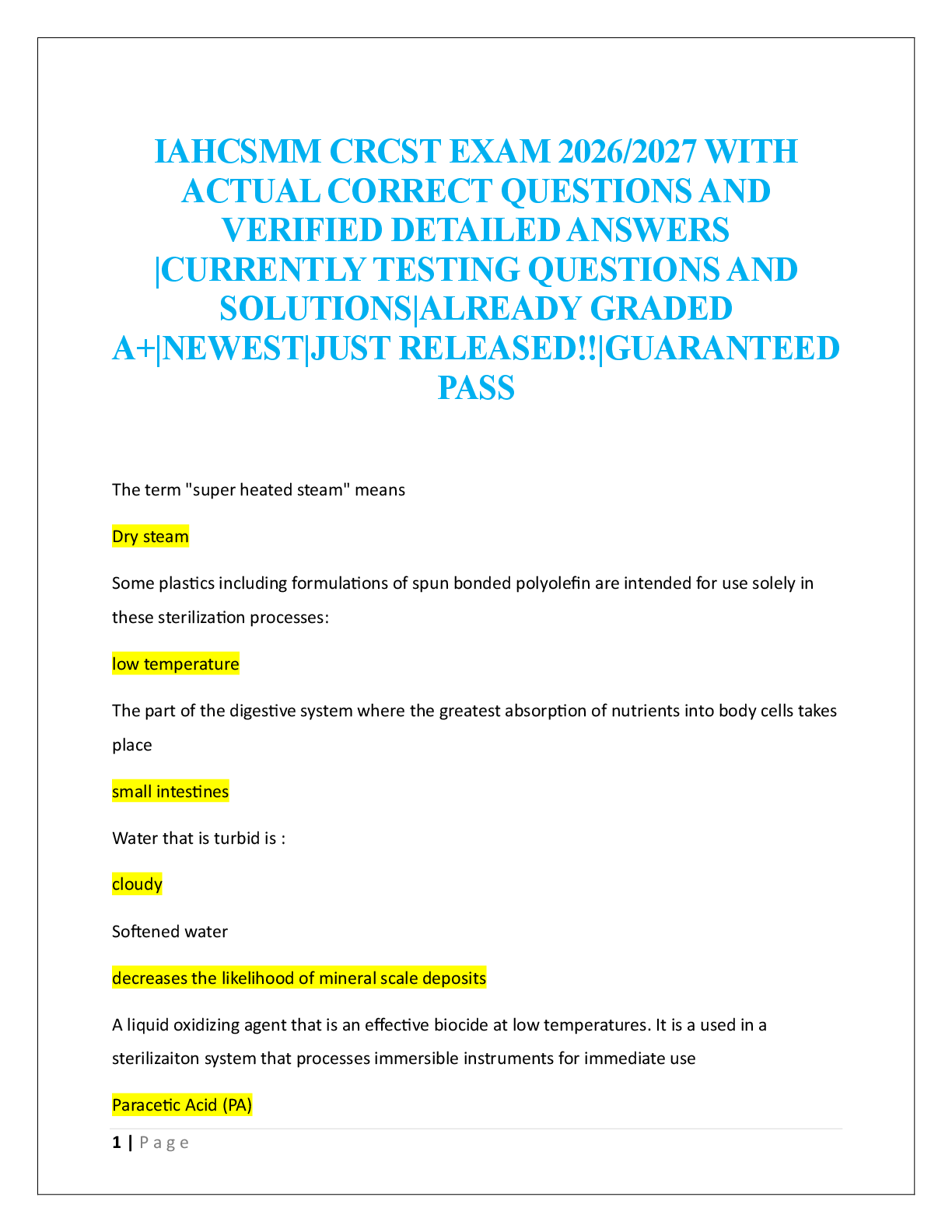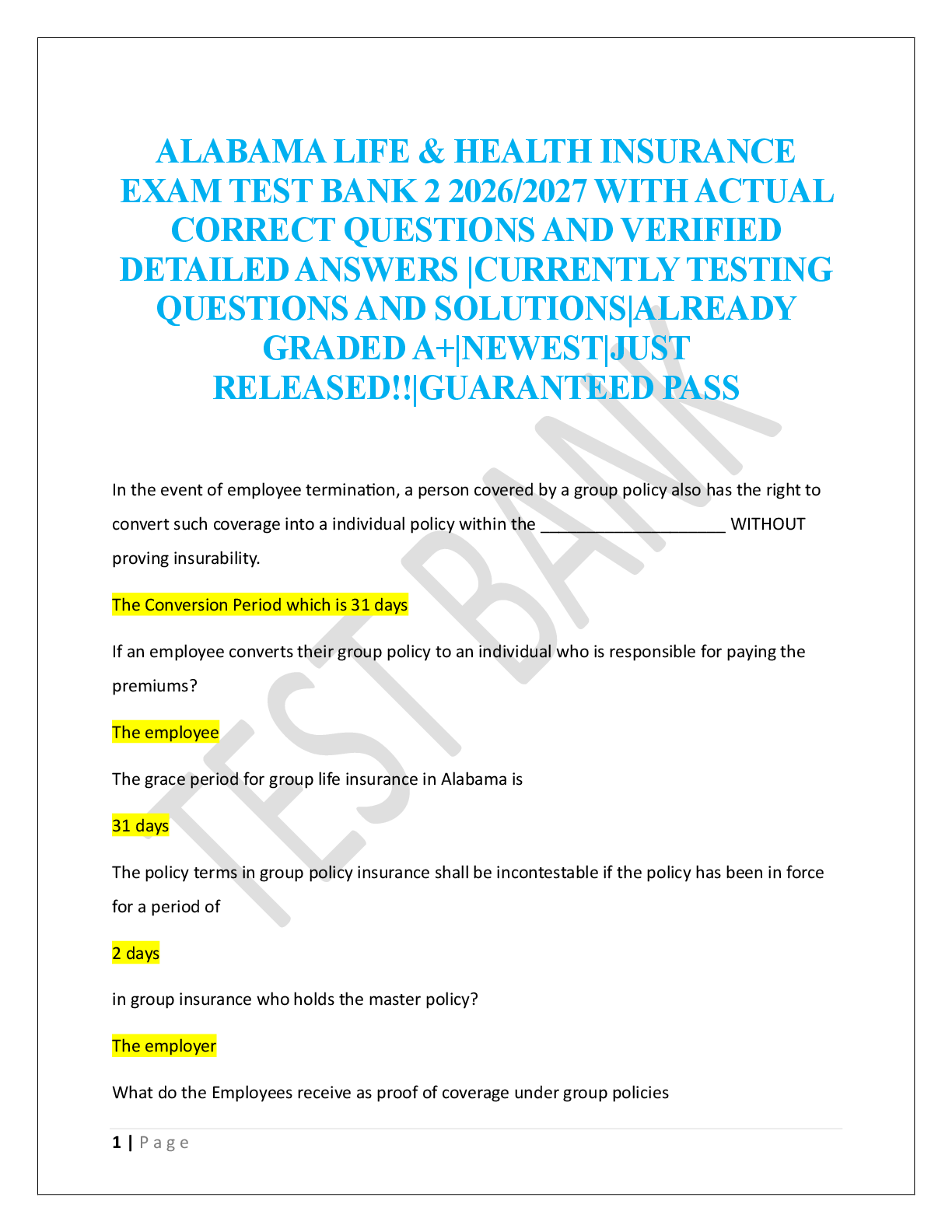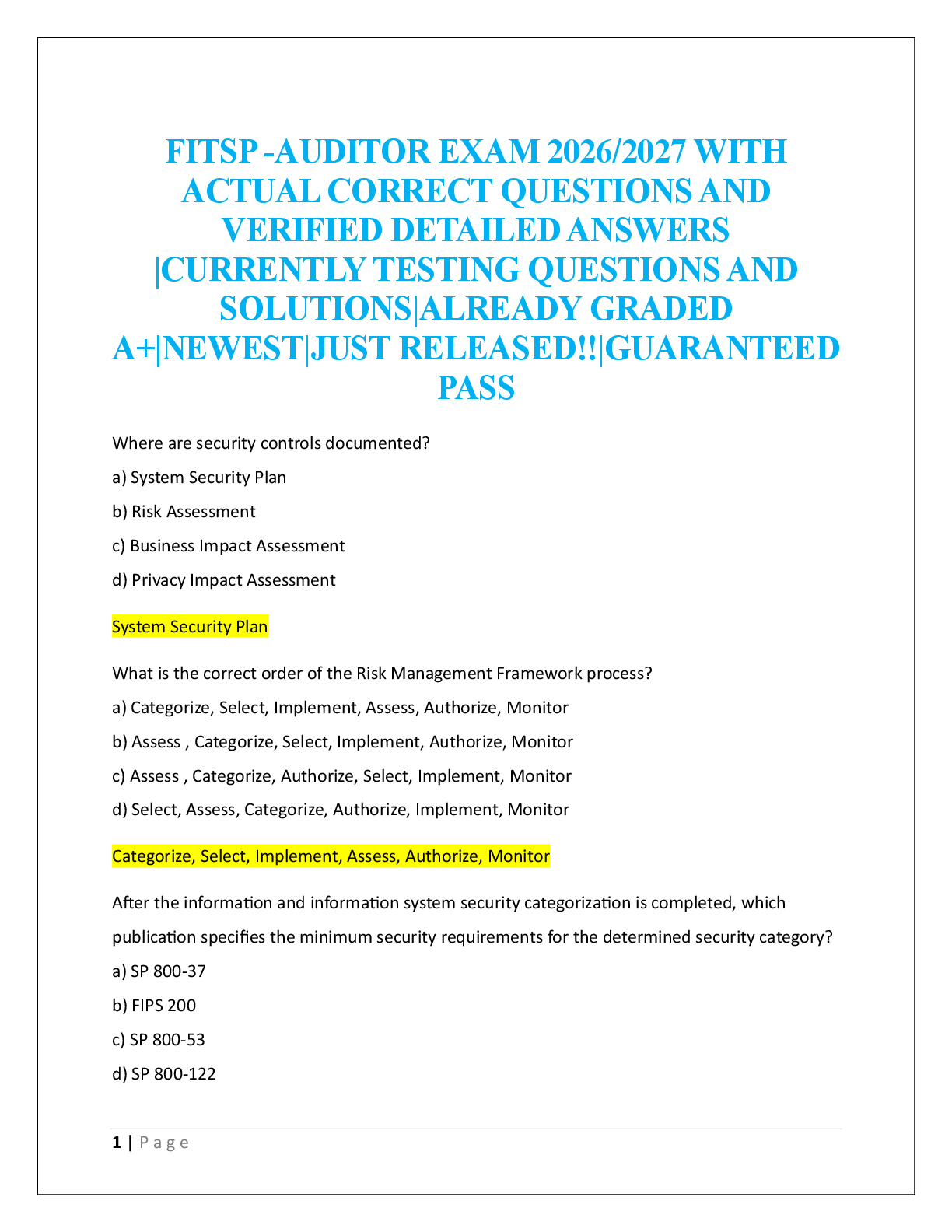CSET SPANISH SUBTEST IV| 125 Questions with 100% Correct Answers
Document Content and Description Below
14th Amendment Correct Answer: to the U.S. Constitution; amendment ratified in 1868 after the Civil War, declares in part: "No State shall make or enforce any law which shall abridge the privileges o ... r immunities of citizens of the United States; nor shall any State deprive any person of life, liberty, or property, without due process of law; nor deny to any person within its jurisdiction the equal protection of the laws." Many of the cases discussed in this section are based on the ***due process and the equal protection clauses*** of the # Amendment. Plessy v. Ferguson Correct Answer: a landmark decision of the U.S. Supreme Court issued in 1896. It upheld the constitutionality of racial segregation laws for public facilities as long as the segregated facilities were equal in quality - a doctrine that came to be known as "separate but equal. Although the decision was related to the segregation of African American students, in many parts of the country Native American, Asian, and Hispanic students were also routinely segregated. " Brown v. Board of Education Correct Answer: REVERSAL of Plessy v. Ferguson; 58 years later in 1954; Like Plessy, focused on the segregation of African American students. But by ruling that states are responsible for providing "equal educational opportunities" for all students made bilingual education for ELLs more feasible. Independent School District v. Salvatierra, Alvarez v. Lemon Grove, and Méndez v. Westminster School District Correct Answer: Addresses Segregation A few lesser known lower level cases concerning the segregation of Hispanic student predate Brown. Independent School District v. Salvatierra (1930) Correct Answer: Mexican American parents in the small border town of Rio, Texas, brought suit against the school district over segregation. The court sided with the school district that argued the segregation was necessary to teach the students English. This argument did not hold, however, for two similar cases in California: Alvarez v. Lemon Grove (1931) and Méndez v. Westminster School District (1947). The judge in Alvarez noted that segregation was not beneficial for the students' English language development and the success of the Méndezcase helped set the stage for Brown. Guey Heung Lee v. Johnson and Johnson v. San Francisco Unified School District Correct Answer: Addresses Segregation In some instances, desegregation efforts made it more difficult. In San Francisco, for example, Chinese Americans fought a desegregation order that would force students out of neighborhood schools that provided bilingual English Chinese programs for newcomer Chinese ELL students. The Chinese community took the case to court in 1971 and it was appealed to the 9th Circuit Court of Appeals in Johnson v. San Francisco Unified School District. In 1974, the court ruled against the Chinese community, declaring simply Brown applies to races. Meyers v. Nebraska Correct Answer: The Right of Communities to Teach Their Native Languages to Their Children [Show More]
Last updated: 3 years ago
Preview 1 out of 18 pages

Buy this document to get the full access instantly
Instant Download Access after purchase
Buy NowInstant download
We Accept:

Also available in bundle (1)
Click Below to Access Bundle(s)

CSET tests compilation bundle
CSET tests compilation bundle
By Crum 3 years ago
$18.5
13
Reviews( 0 )
$8.00
Can't find what you want? Try our AI powered Search
Document information
Connected school, study & course
About the document
Uploaded On
Oct 19, 2022
Number of pages
18
Written in
All
Additional information
This document has been written for:
Uploaded
Oct 19, 2022
Downloads
0
Views
93












